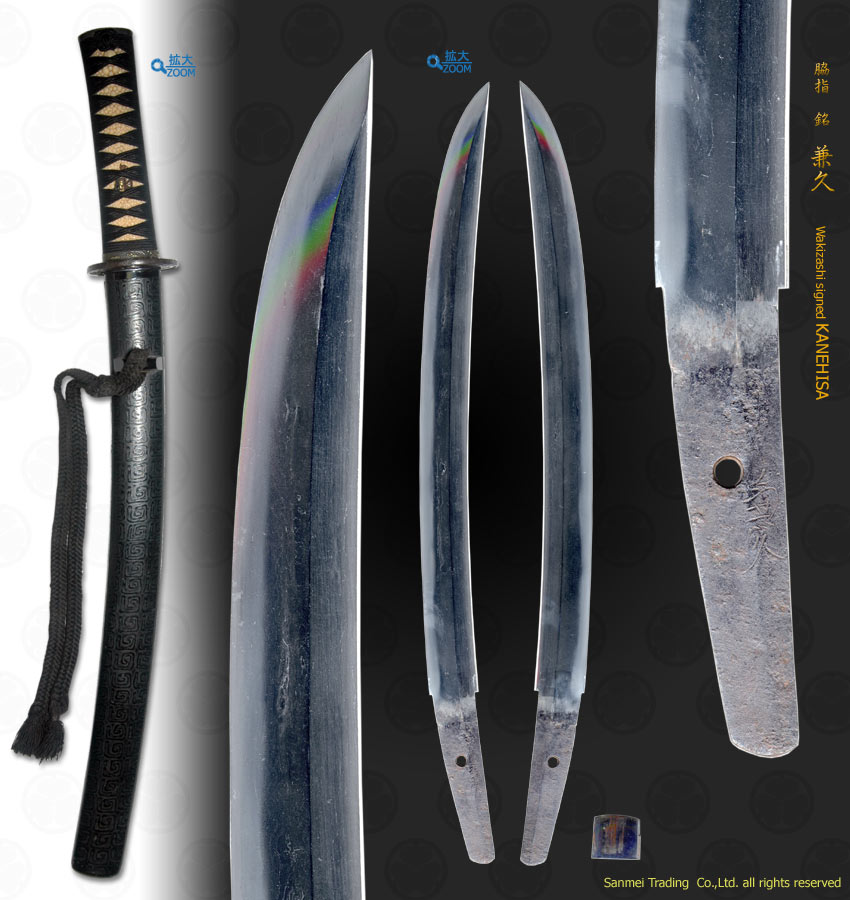in Spiral pattern lacquer scabbard wakizashi koshirae
Length of cutting edge39.1cm Curvature0.9cm Thickness of base6.3mm Width of base31.4mm
Kitae(forging pattern) : Kitae-hada is outstanding itame hada mixing in with entwined flowing masame hada. The surface dims with dark blue steel and are full of pastoral beauty.
Hamon(tempering pattern) : Hamon is Ko-nie based shallow wave and gunome-midare mixing in with togari-ha, some ni-ju-ha double temper lines here and there. Thick nie feet works toward the cutting edge.
Boshi (tip): The temper of the tip waves into small circle then turns back deeply.
Nakago(tang) : UBU un-altered, V-shape (Takanoha) filemarks and round kurijiri heel KURIJIRI. One mekugi-ana. The signature in hakiomote is located next to peg hole, thin chiselled two character that reads Kane Hisa.
Smith KANEHISA had belonged to INTOKU school and it is understood that there are works by initial smith Kanehisa dated the 3rd year of Ouei or 27th year of Ouei with the place of work Noshu-Seki-ju Uemon-no-jo Kanehisa. There are considerable number of works sighed kanehisa or Kanehisa-saku during entire Muromachi period and some of them had moved to Izomo or Iwami province. The subject wakizashi is supposed it's age as the end of Muromachi period in 16th century, from it's broad-minded configuration and it's patina. It's koshirae comprising : spiral pattern lacquered scabbard, Shibuichi ground weasel and bamboo design Fuchi/kashira set, Copper alloy Yobori Monkey performing menuki, Wizard (Sen-nin) besides pine tree IRON tsuba and Shakudo nanako-ji surface Leo motif kozuka. All these material and fittings are choice quality remaining an almost original condition in End of Edo period. The blade is in fine old condition and old polish status, while there are some whitish dots along the cutting edge, all these wares will be wiped off entirely when next polish/make up. The entire blade is in unsophisticated found condition and had been preserved for a long period and shows no marks of repeated/unreasonable polish that remains rich cutting edge for the age of 430 years old.
Old copper habaki, No shira-saya plain wood mounting included.
